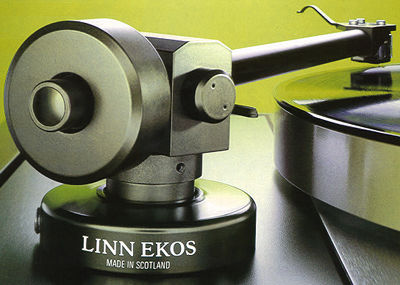In 1986, just as it appeared that vinyl was nearing its end, the SME Series V arrived. The tagline “the best pickup arm in the world” had been used by the Steyning company for a long time, but it had become a bit of a joke. The SME Series III was far from this, and the company’s sole other product was the 3009S2, which was faulty in a different way. The Series V was like a bolt from the blue at the time, the vinyl equivalent of Concorde to the SME III’s VC-10.
To be fair, the Series III had dared to be unusual, employing a titanium nitride armtube for lightness and rigidity. This revolutionary approach was continued in the Series V, but this time the material was magnesium. As any motorsport fan knows, this material is stronger and lighter than aluminium (which is why it’s used in wheels, among other things), and it’s a great choice for the armtube. This was cast and tapered to further reduce resonances, as well as different wall thicknesses. The structure is ultra-rigid due to the lack of joints. Large bearing races create the bearing surfaces on a tool steel shelf, and beyond that lies an underslung counterweight near the arm’s pivot point.
The SME Series IV was released the next year, costing around a quarter less than the Series V due to the removal of the fluid damping system, silver Litz headshell wires, and sprung tracking force mechanism from the V. Interestingly, these are all elements of dubious, if not detrimental, sonic significance, and some argue that the IV is really superior (given the Series V’s circuitry). The one evident flaw is the slightly lower tolerance bearings, but the IVs are still so high that this is an argument in and of itself. It certainly feels the same to operate – cueing this arm with your palm is like managing a top-of-the-line Leica camera.
It’s also quite simple to set up precisely, and the directions are excellent. The arm comes in a sled and may be cranked forward and backwards with excellent precision once fitted on the armboard. Changing cartridges takes a few minutes and can be done repeatedly; compare this to the trouble that Linn’s Ekos entailed, and it’s hard not to be impressed with the SME — it makes all its competitors look positively Neanderthal! With an effective mass of 11g, the Series IV will easily track most cartridges, and the SME V’s fluid damper can be added as an option if needed.
The SME IV (and, yes, V) adds a lot of clarity to vinyl replay. The imaging and soundstaging are excellent, and the frequency extension is unrivalled – the bass is tight and controlled, and the treble is crystal clear. The sole critique is that the sound is fairly dry and analytical; there is a noticeable absence of euphonic coloring, which may be too sharp for some tastes. The advantage is that this pickup arm’s outstanding “deconstructive” abilities – it can scythe through any mix and tell you exactly what’s there and how it was captured. Bass is incredible – rock-solid, vice-like, and full of intensity and articulation. The visual placement in the midband is dazzling and three-dimensional. The treble is silky smooth and open, with a lovely sense of extension. The dynamics are mind-blowing, and I’ve been on the lookout for large, amazing sounding productions to dazzle myself with hi-fi!
The problem is that the SME Series IV’s approach to music production has a more ‘mechanical’ feel to it than some of its competitors. It has a dramatic, fly-by-the-seat-of-your-pants tone, yet it can sound strangely detached from the music’s mood. Some may argue that even the venerable 3009S2 is superior in this regard; the IV isn’t the most romantic performance in the world, which goes against what many people expect from vinyl. What is it, they could ask, if it isn’t sweet and warm?
The top SMEs are design masterpieces that seem completely current even now, twenty-nine years after the initial design was released. This is a remarkable achievement, and the sound is equally spectacular. The issue with these arms is that they aren’t for everyone; while outstanding in most areas, they appear to be less adept at areas of performance that many vinyl aficionados instinctively view as crucial. As always, the trick is to listen to one and then, if you bite, carefully design your system around it.







